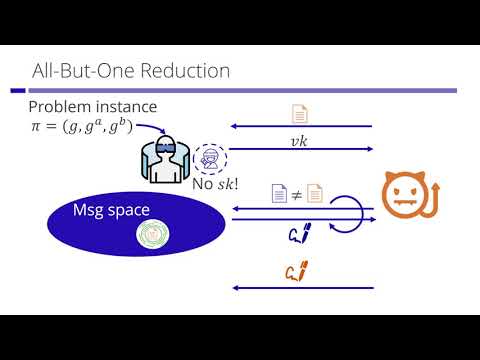CryptoDB
Equipping Public-Key Cryptographic Primitives with Watermarking (or: A Hole Is to Watermark)
| Authors: | |
|---|---|
| Download: | |
| Abstract: | Program watermarking enables users to embed an arbitrary string called a mark into a program while preserving the functionality of the program. Adversaries cannot remove the mark without destroying the functionality. Although there exist generic constructions of watermarking schemes for public-key cryptographic (PKC) primitives, those schemes are constructed from scratch and not efficient. In this work, we present a general framework to equip a broad class of PKC primitives with an efficient watermarking scheme. The class consists of PKC primitives that have a canonical all-but-one (ABO) reduction. Canonical ABO reductions are standard techniques to prove selective security of PKC primitives, where adversaries must commit a target attribute at the beginning of the security game. Thus, we can obtain watermarking schemes for many existing efficient PKC schemes from standard cryptographic assumptions via our framework. Most well-known selectively secure PKC schemes have canonical ABO reductions. Notably, we can achieve watermarking for public-key encryption whose ciphertexts and secret-keys are constant-size, and that is chosen-ciphertext secure. Our approach accommodates the canonical ABO reduction technique to the puncturable pseudorandom function (PRF) technique, which is used to achieve watermarkable PRFs. We find that canonical ABO reductions are compatible with such puncturable PRF-based watermarking schemes. |
Video from TCC 2020
BibTeX
@article{tcc-2020-30595,
title={Equipping Public-Key Cryptographic Primitives with Watermarking (or: A Hole Is to Watermark)},
booktitle={Theory of Cryptography},
publisher={Springer},
author={Ryo Nishimaki},
year=2020
}

